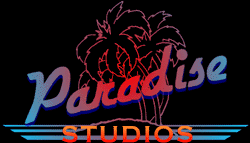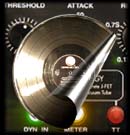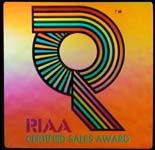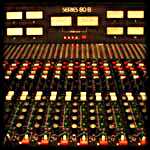
 Audio AudioMastering |
 Platinum Credits
Platinum Credits |
We offer a wide variety of recording
formats :
ANALOG MULTITRACK RECORDERS
2" 24 track Sony JH-24
1/2" Fostex 16 track
DIGITAL MULTITRACK RECORDERS
Macintosh Format :
Digital Performer ( our preferred MIDI sequencer and editor)
Windows Format:
Sonar
Vegas Video
Sound Forge
Stand Alone Formats:
Alesis Adat XT-20 ( 24 Tracks with BRC Master Controller)
16 & 24 bit DAT
CDR
TWO TRACK MASTERING FORMATS
16 bit DAT
24 bit DAT
16 bit Audio CDR
Various formatted Data CDR's
 Equipment
Equipment |
Please see the notes below for further information concerning format compatibility if you're planning to bring in a project you've already begun recording elsewhere.. |
EXPORTING TO DIGITAL PERFORMER:
Most of our clients record their projects in the Digital Performer format. Digital Performer allows very convenient access to our great digital converters (unlike Pro Tools, which is limited in choices) as well as access to a much more capable MIDI editing environment that interfaces with our vast sampler and keyboard selection quickly and efficiently.
We are often asked how to get a project begun elsewhere into a format that can be easily imported into Digital Performer, and have provided this brief overview:
To convert a "Pro Tools" (Mac) session to Digital Performer (Mac):
Unfortunately, Pro Tools doesn't provide a "save as Performer" option in their file save menu. Because of this, we recommend the following method to export a pro tools session to a Digital Performer format.
Export each final track into one contiguous waveform starting at the same point (usually the very beginning of the song ) in SDII format. It's CRUCIAL to note that all bounced tracks to be exported must start at EXACTLY the same point. In some cases, such as a live show recording where you only want "song #4" for example, you might only wish to export part of a file. That's fine as long as the SAME start point is used for ALL tracks.
For instance, for a song having only mono kick, snare, bass and a stereo guitar solo (which doesn't come in for 2 minutes) you would:
1) Record the
Kick only to one
mono track from the
VERY start of the
song up until the
end of the last
kick note.
2) Record the
same individual
tracks for bass &
guitar as in step
1
3) Record the
stereo guitar
solo to a stereo
SDII track from
the VERY start of
the song until
just past the
solo end.
Track all MIDI devices to audio if you are pleased with the quality and character of your available sounds, separating all drums and eliminating all effects if possible.
It is recommended that you additionally save all MIDI data as "Standard MIDI File"
format to allow additional MIDI triggering
in our studio just in case a different sound is desired.
____________________
TO SAVE A DIGITAL PERFORMER FILE IN PRO TOOLS FORMAT:
(mac to mac)
Occasionally, our clients wish us to export Digital Performer files
to a Pro Tools format to continue work elsewhere. The following procedure
is listed to clarify the procedure - most importantly, how to open file that
has been exported from our studio in a Macintosh Pro Tools environment.
Using the OMF Interchange
format you can import your Audio Desk or Digital Performer projects into
Pro Tools while also transferring your region edits and crossfades. Midi
data isn't included (this can be saved separately as a Standard Midi File).
In the File menu of your project choose Save As. Under File Format choose
"OMF Interchange" and save the file. The program will create a separate
OMF File. In your Pro Tools Folder you should find a utility titled "OMF
Tool" or go to (www.digidesign.com) to download it. Launch OMF tool
and from the top menu choose "Convert OMF to ProTools/SD2". Locate the OMF
file and choose "OK". You now have a ProTools Project.
Currently the OMF tool is working with 16 bit files, not 24 bit files.
If you need to create a 24 bit OMF, save your 24 bit DP file using the same
steps mentioned above, then use Digi Design's Digi Translator software instead
of OMF Tool from conversion from OMF to PT session.
TO OPEN THE DIGITAL PERFORMER FILE IN PRO TOOLS (ON A MAC):
Note: Pro Tools users will need the free "OMF Tool utility" that converts
an OMF file into a ready-to-go Pro Tools session. OMF Tool ships on the Pro
Tools installer CD. Check with Pro Tools web page for the appropriate version
for your mac platform.
1.Launch OMF Tool. Choose 'Open Any' from the File menu and locate the
OMFI file created by DP . Select 'Pro Tools 4' as the save type. If a problem
occurs, you'll get a message, otherwise you'll just hear a beep when the translation
is complete.
2. Launch Pro Tools and open the new Session created by OMF Tool . If all
looks good with the audio tracks, the final step is to import any MIDI tracks.
Choose 'Import MIDI/Tracks' from the File menu, and point to the standard
MIDI file you made in Step 1. Leave 'Import Tempo from MIDI file' checked.
You should now have a Pro Tools Session that looks like the original DP project.
___________________________________
Because all software is very
version specific, please call for an exact evaluation if you plan to
bring in a project in that's already recorded or sequenced with software
other than Digital Performer.
CDR's are the
safest media on
which to
transfer audio
data to and from
our studio.
The process of importing or exporting files between differing software
types is very tricky, and must be done carefully. Different software versions,
"multiple takes"
on single tracks,
effects plugins,
storage media,
and many other
variables can
hinder or make
the session
non-transferable.
Any time you plan
on importing or
exporting data
between
computer-based
digital audio
recorders, we strongly
recommend that a small "test file" of your project be dropped off at our
studio well in advance of your session date to allow us to check file
compatibility.
Contact us by email or phone us at (916) 424-8772 for more current updates
on format compatibility.